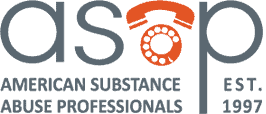A Deep Dive into the SAP’s Role as the Gatekeeper and DOT Regulatory Updates
published in The Journal of Employee Assistance. Click to read in detail
By Sandra Serrano
The Department of Transportation (DOT) was commissioned to govern and enforce the “Procedures for Transportation Workplace Drug and Alcohol Testing Programs” outlined in 49 CFR Part 401. This agency and its regulations were in response to growing concerns regarding substance use among safety-sensitive employees in transportation in the 1980s. This culminated from a train collision on January 4th, 1987, killing sixteen people and injuring over 175. The National Transportation Safety Board concluded that the Conrail Locomotive Engineer was impaired by marijuana when barreling past a stop signal in front of an Amtrak passenger train. The Washington Post headlined January 20, 1988, “Drugs Blamed in Train Crash That Killed 162,” bringing national attention to the risks of impairment in transportation workers. These regulations provide the regulatory oversight of DOT safety-sensitive positions that are pivotal to our foundational integrity and mission of safety for the public.
The Origins of 49 CFR Part 40
The Omnibus Transportation Employee Testing Act of 1991 was followed by the DOT agencies being directed to implement drug and alcohol testing programs. This legislation set the framework to what became the DOT 49 CFR Part 40, the most comprehensive version going into effect 2001.
The Role of the SAP: Subpart O and the Return-to-Duty Process
In the 2001 version of 49 CFR Part 40, Subpart O defined the role of a DOT-qualified Substance Abuse Professional (SAP). SAPs are referred to as the “Gatekeeper,” protecting public safety, conducting evaluations of those DOT safety-sensitive covered employees having a DOT drug and alcohol testing infraction(s). The SAP determines when the employee has successfully complied with the Return-to-Duty process and is eligible to return to work.
The DOT Return-to-Duty (RTD) process occurs when a safety-sensitive employee violates the drug and alcohol regulations. An employer must immediately remove that covered employee from duty and provide them with a listing of SAPs. The SAP conducts a thorough initial evaluation to determine what course of recommendations the employee will need to stay in this line of work. The employee will be referred out for the appropriate education and/or treatment. When the employee completes the required treatment plan, the SAP will perform a follow-up evaluation. This determines the employee’s readiness to return to work safely. When the SAP deems the covered employee successfully complied with the program, then the employer or future employer can initiate a return-to-duty test prior to resuming safety-sensitive duties. For a future employer, they would conduct the return-to-duty drug test instead of a pre-employment test; a return-to-duty test supersedes due to its requirement of an observed collection.
The SAP also establishes a schedule for follow-up testing, which the employer must carry out over a specified period. The follow-up schedule can range from a minimum of one year with at least six tests, up to five years, frequency and duration of time determined by the SAP’s clinical judgment. The employer is responsible for carrying out the entirety of the follow-up testing plan, ensuring all tests are unannounced and collections are conducted under direct observation. The SAP can also request ongoing or aftercare services for the employee to obtain additional support in maintaining progress. This process is not only about compliance; it is designed to protect the public while offering the covered employees a structured path to rehabilitation and reintegration into the workforce to stay on course.
Understanding ODAPC and Its Modalities
The Office of Drug and Alcohol Policy and Compliance (ODAPC) oversees the DOT drug and alcohol testing regulations. ODAPC and its modalities manage the following regulations:
- ODAPC- 49 CFR Part 401, including Subpart O – SAP & the RTD Process
- Federal Motor Carrier Safety Administration (FMCSA)- 49 CFR Part 3823
- Federal Aviation Administration (FAA)- 14 CFR Part 1204
- Federal Railroad Administration (FRA)- 49 CFR Part 2195
- Federal Transit Administration (FTA)- 49 CFR Part 6556
- Pipeline and Hazardous Materials Safety Administration (PHMSA)- 49 CFR Part 1997
- S. Coast Guard (USCG- part of Homeland Security)- 46 CFR Part 168, 46 CFR Part 49
SAPs are mandated to possess certain credentials, “clinical experience in the diagnosis and treatment10” of substance use disorders, be aware of the role of the safety-sensitive covered employee being seen and hold a solid understanding of the DOT regulations and the specific modality requirements under which that employee is covered. In addition, the SAPs undergo qualification training, pass the exam, and maintain continuing education to stay compliant.
SAP Industry Pitfalls and Challenges
Despite clear regulations, the industry still faces challenges from SAPs not following DOT guidelines and creating unethical practices in efforts to capitalize financially. Regulatory reminder to SAPs from ODAPC11 and warning signs include:
- SAPs lacking proper DOT qualifications: credentials, experience and knowledge
- Offering and advertising return-to-duty timelines before evaluations
- Issuing treatment plans before an assessment is conducted
- Conducting evaluations solely by phone
- Providing generic, one-size-fits-all recommendations
- Acting as both evaluator and treatment provider
- Pre-determining follow-up testing schedules
These practices undermine the SAP’s critical role in safeguarding transportation safety and must be addressed through ongoing education and oversight.
The Mission of SAPs: More Than Clinical Support
SAPs serve a unique mission; they protect public safety while supporting the DOT safety-sensitive covered employee. Unlike the clinicians’ general practice, SAPs operate within a federal framework to ensure that only safe, compliant employees are allowed to return to safety-sensitive duties.
This mission requires SAPs to remain aligned with the DOT’s stance on drug and alcohol use, including marijuana. According to guidance issued by ODAPC12, recreational marijuana use remains prohibited for safety-sensitive transportation employees, regardless of state legalization.
Additionally, medical marijuana13 use is not permitted to be used under DOT regulations, even with a medical note. DOT-regulated employees who test positive for marijuana will be considered in violation of federal regulations.
ODAPC also issued guidance cautioning employees about CBD products, which may contain undisclosed levels of THC that could trigger a positive drug test. There is no legitimate medical explanation under DOT rules for a marijuana-positive test resulting from CBD use. If a drug test reports positive for marijuana, it is based on THC levels ingested, not CBD use. Employees and SAPs should refer to ODAPC’s warning: Buyer Beware.14
In short, as a SAP, it is imperative to respect and understand the DOT’s core mission: protecting the traveling public. SAPs are the frontline gatekeepers in this effort, tasked with ensuring only those who are truly ready and safe return to duty. Meaning, when one is practicing as a DOT qualified SAP, the role is different than when you have a patient come through your regular practice. It’s imperative that SAPs understand this difference to ensure safety for everyone.
DOT Updates Over the Years
The U.S. Department of Transportation and its agencies make regulatory updates to ensure that the drug and alcohol testing procedures for safety-sensitive covered employees remain scientifically valid, providing technological updates, legally compliant, fair and accurate, remain responsive to industry needs and feedback, as well as enhancing safety.
Oral Fluid Testing: Lab-based oral fluid testing was approved by the DOT and went into effect June 1, 202315. However, it requires 2 laboratories to be certified by the National Laboratory Certification Program (NLCP). The industry is eagerly awaiting this certification process to take place in order to put DOT lab-based oral fluid into workplace testing.
ODAPC List Service: All service agents, including SAPs, are mandated to subscribe to ODAPC List Serve to be notified and current with regulatory updates and guidance. This federal regulation was added January 1, 2018.
FMCSA Clearinghouse: The largest of the DOT modalities is the Federal Motor Carrier Safety Administration. In recent years, this modality has had significant changes implemented in efforts to improve safety. FMCSA launched the Clearinghouse16 database under congressional mandate on January 6, 2020, just months before COVID-19 struck. This secure, online database tracks commercial driver drug and alcohol program violations and ensures that drivers cannot conceal a failed test or other violations showing as ‘prohibited’ in the database. Previously, commercial drivers with violations would switch employers to evade being removed from duty and having to complete the RTD process, creating serious safety risks.
SAPs working with FMCSA covered employees have several responsibilities within the FMCSA Clearinghouse database. First, the SAP must register in the Clearinghouse and attest that they qualify under §40.281 as a DOT Substance Abuse Professional. Next, the employee must send an invitation to the SAP, which must be accepted before proceeding with the employee. After completing the initial evaluation and assessment, the SAP enters the date into the Clearinghouse by the close of business day following the evaluation. The SAP makes clinical recommendations based on the employee’s required level of care. Once that is completed, a follow-up evaluation is conducted and the SAP determines the employee’s readiness to return-to-duty, based on their job functions meeting safety requirements. The SAP must enter the follow-up evaluation date into the Clearinghouse by the close of business on the day after determining the employee has successfully completed the RTD process. The SAPs must meet the reporting regulations as outlined. By completing these sections, it is an indicator to employers and future employers that a RTD test(s) can be conducted. Upon a negative RTD test result(s) the employee may perform DOT safety-sensitive functions. Note that the SAP will not be able to see the violation information in the database, they are not an authorized party to conduct a query.
Most recently, the FMCSA enhanced the Clearinghouse by enabling live data connections with state Departments of Motor Vehicles (DMVs), referred to as the Clearinghouse II. This integration allows states to revoke or downgrade CDL licenses based on real-time Clearinghouse information. This created a sense of urgency for commercial drivers to successfully complete the SAP portion of the Return-to-Duty process and perform the required negative RTD test(s) issued by employers and/or the owner/operators’ Consortium/Third Party Administrators (C/TPAs), updating the database as ‘not prohibited’ before the Clearinghouse II took effect on November 18, 2024, of this past year.
SAP Face-to-Face Remote Evaluations: Temporary guidance was given during COVID-19, permitting “face-to-face remote evaluations17,” later into a final rule effective June 1, 2023. The highlights of this new regulation state:
- SAPs are to continue to follow their state-issued license or certifying body’s guidance on where they are authorized to geographically provide services.
- A SAP may only use remote technology if their State-issued license or certification authorizes them to do so.
- Remote evaluations must allow for real-time, two-way audio and visual communication between the SAP and the employee.
- The SAP is responsible for ensuring the technology used (e.g., internet speed, video clarity, platform) is of sufficient quality.
- The technology must enable the SAP to effectively observe and assess verbal, non-verbal, and physical cues as they would during an in-person evaluation.
- The SAP must be able to objectively evaluate the employee’s characteristics through the remote platform.
- A SAP conducting a remote evaluation for someone outside their local area should take steps to become familiar with high-quality programs and qualified counselors in the employee’s region when recommending treatment or education options.
SAP Guidelines: The SAP Guidelines18 were updated in June 2023, providing a list of changes on the last page as a resource to all SAPs. These guidelines provide a wealth of information for SAPs.
‘Back to Basics’ for SAPs: ODAPC issued a series of reminders to all service agents, called ‘Back to Basics.’19 For Substance Abuse Professionals, the reminder included: SAPs serve as the critical “Gatekeeper” in the DOT’s return-to-duty process, with a responsibility to protect public safety through unbiased, thorough evaluations and individualized treatment recommendations. You must meet all SAP qualifications, avoid advocacy for either party, and ensure that assessments, reports, and follow-up testing are conducted properly and consistently. Each case requires a tailored approach—no shortcuts, no cookie-cutter solutions. Always prioritize accuracy and integrity, as your decisions directly impact transportation safety. ODAPC is urging all service agents to “do it right the first time and every time.”19
Future Trends: Fentanyl and Testing Panels
On January 16, 2025, the Substance Abuse and Mental Health Services Administration (SAMSHA), Department of Health and Human Services (HHS) announced, “Mandated Guidelines for Federal Workplace Drug Testing Programs-Authorized Testing Panels20,” adding fentanyl to the drug testing panel for all federal employees. This enhanced drug testing panel revision recognizes the need for change due to the opioid crisis and will go into effect on July 7, 2025. This applies only to federal employees at this time. It does not yet apply to DOT safety-sensitive covered employees, as they have not given their formal positioning. The DOT would first issue a Notice of Proposed Rulemaking (NPRM), including a public comment period, review the comments, and then provide a final rule.
In conclusion, as regulations evolve and new challenges emerge, SAPs and industry professionals must remain vigilant, educated21, and committed to upholding DOT’s mission. By doing so, they not only protect the integrity of transportation systems but also play a vital role in national public safety.
Resources:
- U.S. Department of Transportation. “Procedures for Transportation Workplace Drug and Alcohol Testing Programs (49 CFR Part 40).” Last modified June 25, 2024. https://www.transportation.gov/odapc/part40.
- Michael Taylor, “Drugs Blamed in Train Crash That Killed 16,” Washington Post, January 21, 1988, https://www.washingtonpost.com/archive/local/1988/01/21/drugs-blamed-in-train-crash-that-killed-16/f9c5bce0-b183-41dc-9679-ab67c9336d85/
- U.S. Government Publishing Office. “49 CFR Part 382 – Controlled Substances and Alcohol Use and Testing.” Electronic Code of Federal Regulations. Last modified November 18, 2024. https://www.ecfr.gov/current/title-49/subtitle-B/chapter-III/subchapter-B/part-382.
- U.S. Government Publishing Office. “14 CFR Part 120 – Drug and Alcohol Testing Program.” Electronic Code of Federal Regulations. Last modified December 18, 2024. https://www.ecfr.gov/current/title-14/chapter-I/subchapter-G/part-120.
- U.S. Government Publishing Office. “49 CFR Part 219 – Control of Alcohol and Drug Use.” Electronic Code of Federal Regulations. Last modified April 24, 2025. https://www.ecfr.gov/current/title-49/subtitle-B/chapter-II/part-219.
- U.S. Government Publishing Office. “49 CFR Part 655 – Prevention of Alcohol Misuse and Prohibited Drug Use in Transit Operations.” Electronic Code of Federal Regulations. Last modified April 24, 2025. https://www.ecfr.gov/current/title-49/subtitle-B/chapter-VI/part-655.
- U.S. Government Publishing Office. “49 CFR Part 199 – Drug and Alcohol Testing.” Electronic Code of Federal Regulations. Last modified April 24, 2025. https://www.ecfr.gov/current/title-49/subtitle-B/chapter-I/subchapter-D/part-199.
- U.S. Government Publishing Office. “46 CFR Part 16 – Chemical Testing.” Electronic Code of Federal Regulations. Last modified March 17, 2025. Accessed April 28, 2025. https://www.ecfr.gov/current/title-46/chapter-I/subchapter-B/part-16.
- U.S. Government Publishing Office. “46 CFR Part 4 – Marine Casualties and Investigations.” Electronic Code of Federal Regulations. Last modified March 17, 2025. Accessed April 28, 2025. https://www.ecfr.gov/current/title-46/chapter-I/subchapter-A/part-4.
- U.S. Department of Transportation. “§ 40.281 Who Is Qualified to Act as a SAP?” Office of Drug & Alcohol Policy & Compliance. Last modified April 24, 2025. https://www.transportation.gov/odapc/part40/40-281.
- U.S. Department of Transportation. “Reminder to Substance Abuse Professionals – Ensuring a Return-to-Duty Process Unique to Each Individual Employee.” Office of Drug & Alcohol Policy & Compliance. Last modified October 4, 2022. Accessed April 28, 2025. https://content.govdelivery.com/accounts/USDOT/bulletins/3304b9a.
- U.S. Department of Transportation. “DOT ‘Recreational’ Marijuana Notice.” Office of Drug & Alcohol Policy & Compliance. Last modified December 3, 2012. Accessed April 28, 2025. https://www.transportation.gov/odapc/dot-recreational-marijuana-notice.
- U.S. Department of Transportation. “DOT ‘Medical Marijuana’ Notice.” Office of Drug & Alcohol Policy & Compliance. Last modified November 19, 2019. Accessed April 28, 2025. https://www.transportation.gov/odapc/medical-marijuana-notice.
- U.S. Department of Transportation. “DOT ‘CBD’ Notice.” Office of Drug & Alcohol Policy & Compliance. Last modified February 18, 2020. Accessed April 28, 2025. https://www.transportation.gov/odapc/cbd-notice.
- U.S. Department of Transportation. “Procedures for Transportation Workplace Drug and Alcohol Testing Programs: Addition of Oral Fluid Specimen Testing for Drugs.” Federal Register 88, no. 84 (May 2, 2023): 27596–27653. https://www.govinfo.gov/content/pkg/FR-2023-05-02/pdf/2023-08041.pdf.
- Federal Motor Carrier Safety Administration. Drug & Alcohol Clearinghouse. U.S. Department of Transportation. Last modified April 24, 2025. Accessed April 28, 2025. https://clearinghouse.fmcsa.dot.gov/.
- U.S. Department of Transportation. Procedures for Transportation Workplace Drug and Alcohol Testing Programs: Final Rule. Federal Register, Vol. 88, No. 84 (May 2, 2023): 27436–27453. https://www.govinfo.gov/content/pkg/FR-2023-05-02/pdf/2023-08041.pdf.
- U.S. Department of Transportation. “Substance Abuse Professional Guidelines.” Office of Drug & Alcohol Policy & Compliance. Last modified June 9, 2023. Accessed April 28, 2025. https://www.transportation.gov/odapc/substance-abuse-professional-guidelines.
- U.S. Department of Transportation. “Back to Basics for Substance Abuse Professionals.” Office of Drug & Alcohol Policy & Compliance. Last modified October 13, 2023. Accessed April 28, 2025. https://www.transportation.gov/odapc/back_to_basics/SAP.
- U.S. Department of Health and Human Services. “Mandatory Guidelines for Federal Workplace Drug Testing Programs: Authorized Testing Panels.” Federal Register 90, no. 11 (January 16, 2025): 4662–4668. https://www.federalregister.gov/documents/2025/01/16/2025-00425/mandatory-guidelines-for-federal-workplace-drug-testing-programs-authorized-testing-panels.
- Employee Assistance Professionals Association. “DOT Substance Abuse Professional (SAP).” EAPA. Accessed April 28, 2025. https://eapassn.org/general/custom.asp?page=dotsap.


